Also known as German spice cookies or German gingerbread cookies, these Pfeffernusse cookies are popular holiday cookies in Germany, Denmark, and The Netherlands. Pfeffernusse have a flavor similar to a traditional gingerbread cookie but have a distinct kick from the ground pepper and a hint of licorice from the anise extract. These cookies hold up really well, so they are perfect for holiday cookie exchanges. If you need another recipe to fill up your cookie tin, try my anise cookies, lace cookies, or chocolate crinkle cookies!
What You Need to Make This Recipe
Butter — be sure to buy unsalted butter and not salted butter. Various brands of salted butter do not have a standardized amount of salt and Pfeffernusse is not meant to be salty!
Brown sugar — I prefer dark brown sugar over light brown sugar for a deeper and richer molasses flavor for these spiced Pfeffernusse cookies, but light sugar will work too if that’s what you prefer. If you do not have brown sugar, see my guide on how to make brown sugar.
Molasses — I recommend using unsulphured molasses in this Pfeffernusse cookie recipe. It is made from ripe sugar cane with no additives. When molasses use unripe sugarcane, it may leave a chemical aftertaste to the molasses due to being treated with sulfur dioxide.
Spices — I use a combination of ground ginger, ground cinnamon, ground cardamom, ground cloves, ground pepper, and freshly grated nutmeg. I recommend not changing the measurements as it’s a fine balance between all of them for the best-flavored cookies.
Anise extract — this is a strong, slightly sweet licorice flavoring made from anise seed.
Confectioners’ sugar — you’ll need confectioners’ sugar, also known as powdered sugar or icing sugar, for coating the Pfeffernusse cookies. If you don’t have powdered sugar, you can see my post on how to make your own powdered sugar.
How to Make Pfeffernusse
1. In a small saucepan, combine butter, granulated sugar, molasses, and honey over medium heat. Cook, stirring frequently until the mixture just starts to bubble. Remove from the heat before stirring in the ginger, cinnamon, cardamom, anise extract, cloves, pepper, nutmeg, and salt. Transfer to a large bowl, and let cool for 20 minutes or until barely warm to the touch.
2. Whisk together the all purpose-flour and baking soda.
3. To the cooled spiced butter mixture, whisk in the egg until well combined.
4. Fold in the flour and baking soda until all of the flour is incorporated.
5. Transfer the dough to a sheet of plastic wrap, cover, and press into a 1-inch-thick square. Refrigerate for 2 hours or up to 3 days.
6. Unwrap the cookie dough and cut it into ¾-inch wide strips. Cut again, making ¾-inch-wide strips running perpendicular to the first set, creating cubes.
7. Roll each cube of cookie dough between your palms to create a ball. Place on the lined baking sheets 1½ inches apart. Bake one sheet at a time for 10 to 12 minutes or until cookies are firm to the touch and just starting to crack on top.
8. Let cookies cool for a few minutes on the cookie sheets. Toss cooled cookies in confectioners’ sugar until well coated. Transfer the Pfeffernusse cookies to a wire rack to cool completely. Toss the Pfeffernusse again in confectioners’ sugar once cooled.
Pro Tips for Making This Recipe
- Measure your flour correctly! Adding too much flour to this pfeffernusse recipe is the most common mistake and will yield a dry and dense cookie. The best and easiest way to measure flour is by using a scale. If you don’t have one, then fluff your flour with a spoon, sprinkle it into your measuring cup, and use a knife to level it off. If you scoop the flour straight from the bag, you will overpack the measuring cup.
- It’s essential to roll these Pfeffernusse cookies in powdered sugar twice. The powdered sugar may melt onto the cookies upon the first roll. The second coat makes sure the cookies are fully coated.
- Do not skip chilling the Pfeffernusse cookie dough as you don’t want them to spread into a flat cookie upon baking.
- Always keep the unrolled dough covered in the fridge. As you’ll have to bake these German spice cookies in batches, you don’t want the dough to come to room temperature or dry out between batches.
- The easiest way to measure molasses and honey is to spray your measuring spoon with non-stick spray or grease it with a bit of butter. This way, the molasses and honey slides out of the measuring spoon.
- Always line the sheet pan with parchment. The parchment helps the Pfeffernusse cookies bake more evenly and prevent them from cracking or breaking when lifting them.
- If you don’t have anise extract, you can use ½ teaspoon ground anise seed or sub for vanilla or almond extract.
Frequently Asked Questions
Can I make this ahead of time?
I highly recommend making the cookie dough ahead of time and leaving it in the fridge. The dough tastes better the longer it chills as it gives the spices time to flavor the dough. The dough can stay wrapped in the refrigerator for up to 3 days before rolling to bake. The dough can also be frozen for up to 3 months. Allow the dough to thaw overnight in the fridge before rolling.
How do I store leftover spiced cookies?
These spiced German cookies are even more flavorful the next day, so they’re the perfect make-ahead holiday cookie! Store the Pfeffernusse at room temperature for up to a week in an airtight container.
Can I freeze them?
You can freeze Pfeffernusse before or after baking them. If you plan on freezing them beforehand, place the rolled dough balls on a lined sheet pan and flash freeze them, so they don’t stick together. Once frozen, the balls can be transferred into a freezer-safe bag and stored frozen for up to 3 months. Bake them as directed from frozen with an extra minute. If you want to freeze them after baking, skip rolling them in the powdered sugar and do so before serving.
Can I glaze these cookies?
A popular alternative to rolling these Pfeffernusse cookies in powdered sugar is dipping them in a glaze. To make this style, whisk the confectioners’ sugar with 2 to 3 tablespoons of milk (you want a thick glaze, but one that is spoonable). Place a cooled cookie on a fork over the glaze. Spoon the glaze over the cookie, fully coating it. Tap the fork on the side of the bowl a few times to remove excess glaze, and transfer the Pfeffernusse to a wire rack until set, about 2 hours.
If you’ve tried this Pfeffernusse recipe, then don’t forget to rate the recipe and let me know how you got on in the comments below, I love hearing from you!
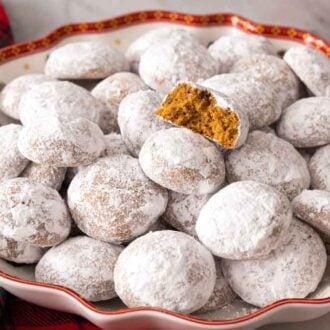
Pfeffernusse
Equipment
- Small pot
- Baking Sheet
- Parchment paper
Ingredients
- ½ cup unsalted butter (113g)
- ½ cup firmly packed dark brown sugar (110g)
- ¼ cup unsulphured molasses (80mL)
- ¼ cup honey (80mL)
- 2 teaspoons ground ginger
- 2 teaspoons ground cinnamon
- 1 teaspoon ground cardamom
- 1 teaspoon anise extract
- ¾ teaspoon ground cloves
- ¾ teaspoon ground pepper
- ½ teaspoon freshly grated nutmeg
- ½ teaspoon salt
- 1 large egg
- 3 cups all-purpose flour (360g)
- ½ teaspoon baking soda
- 2 cups confectioners’ sugar (240g)
Instructions
- In a small saucepan, combine butter, sugar, molasses, and honey over medium heat. Cook, stirring frequently until the mixture just starts to bubble. Remove from the heat. Stir in the ginger, cinnamon, cardamom, anise extract, cloves, pepper, nutmeg, and salt. Transfer to a large bowl, and let cool for 20 minutes or until barely warm to the touch.
- Once cooled, whisk in the egg until well combined. Fold in the flour and baking soda until all of the flour is incorporated. Transfer the dough to a sheet of plastic wrap, cover and press into a 1-inch-thick square. Refrigerate for 2 hours or up to 3 days. (The dough gets more flavorful as it rests, so this is a great step to make ahead.)
- When ready to bake, position oven racks towards the center of the oven, and preheat the oven to 350F. Line two baking sheets with parchment paper.
- Unwrap the cookie dough and cut into ¾-inch wide strips. Cut again making ¾-inch-wide strips running perpendicular to the first set, creating cubes. Roll each cube of dough between your palms to create a ball. Place on the lined baking sheets 1 1/2 inches apart. If you can’t fit all of the dough on two sheets, rewrap and chill the remaining dough to roll and bake after the first batch.
- Bake one sheet at a time for 10 to 12 minutes or until cookies are firm to the touch and just starting to crack on top. Let cookies cool for a few minutes. Toss cooled cookies in confectioners’ sugar until well coated. Transfer to a wire rack to cool completely. Toss again in confectioners’ sugar once cooled.
Notes
- Measure your flour correctly! Adding too much flour to the recipe is the most common mistake and will yield a dry and dense cookie. The best and easiest way to measure flour is by using a scale. If you don’t have one, then fluff your flour with a spoon, sprinkle it into your measuring cup, and use a knife to level it off. If you scoop the flour straight from the bag, you overpack the measuring cup.
- It’s essential to roll these German cookies in powdered sugar twice. The powdered sugar may melt onto the cookies upon the first roll. The second coat makes sure the cookies are fully coated.
- Do not skip chilling the cookie dough as you don’t want them to spread into a flat cookie upon baking.
- Always keep the unrolled dough covered in the fridge. As you’ll have to bake these German cookies in batches, you don’t want the dough to come to room temperature or dry out between batches.
- The easiest way to measure molasses and honey is to spray your measuring spoon with non-stick spray or grease it with a bit of butter. This way, the molasses and honey slides out of the measuring spoon.
- Always line the sheet pan with parchment. The parchment help cookies bake more evenly and prevent them from cracking or breaking when lifting them.
- If you don’t have anise extract, you can use ½ teaspoon ground anise seed or sub for vanilla or almond extract.


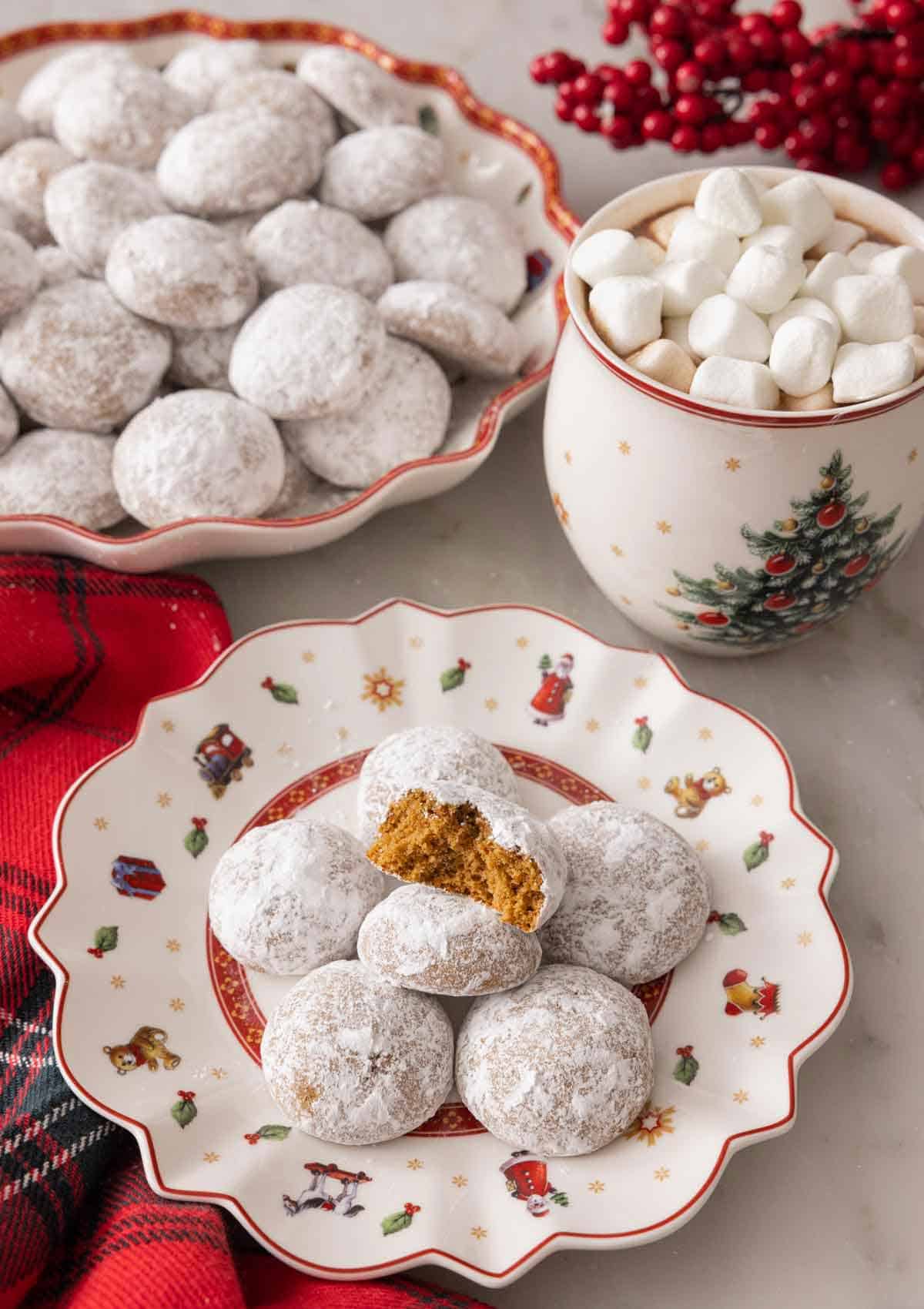
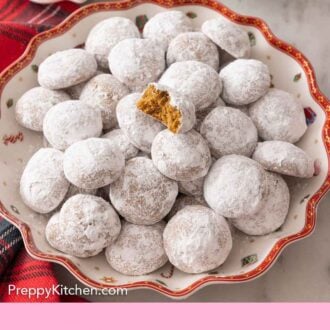
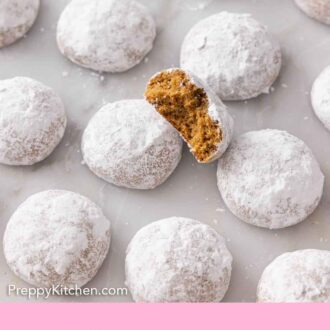

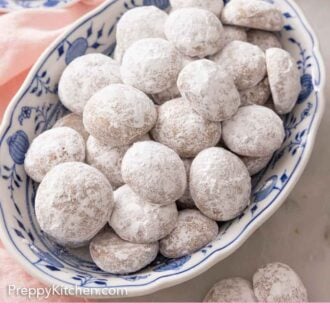
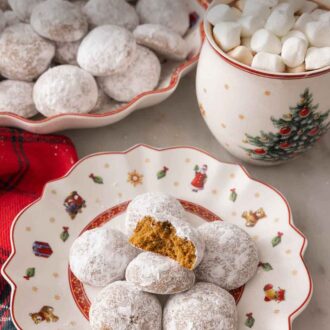
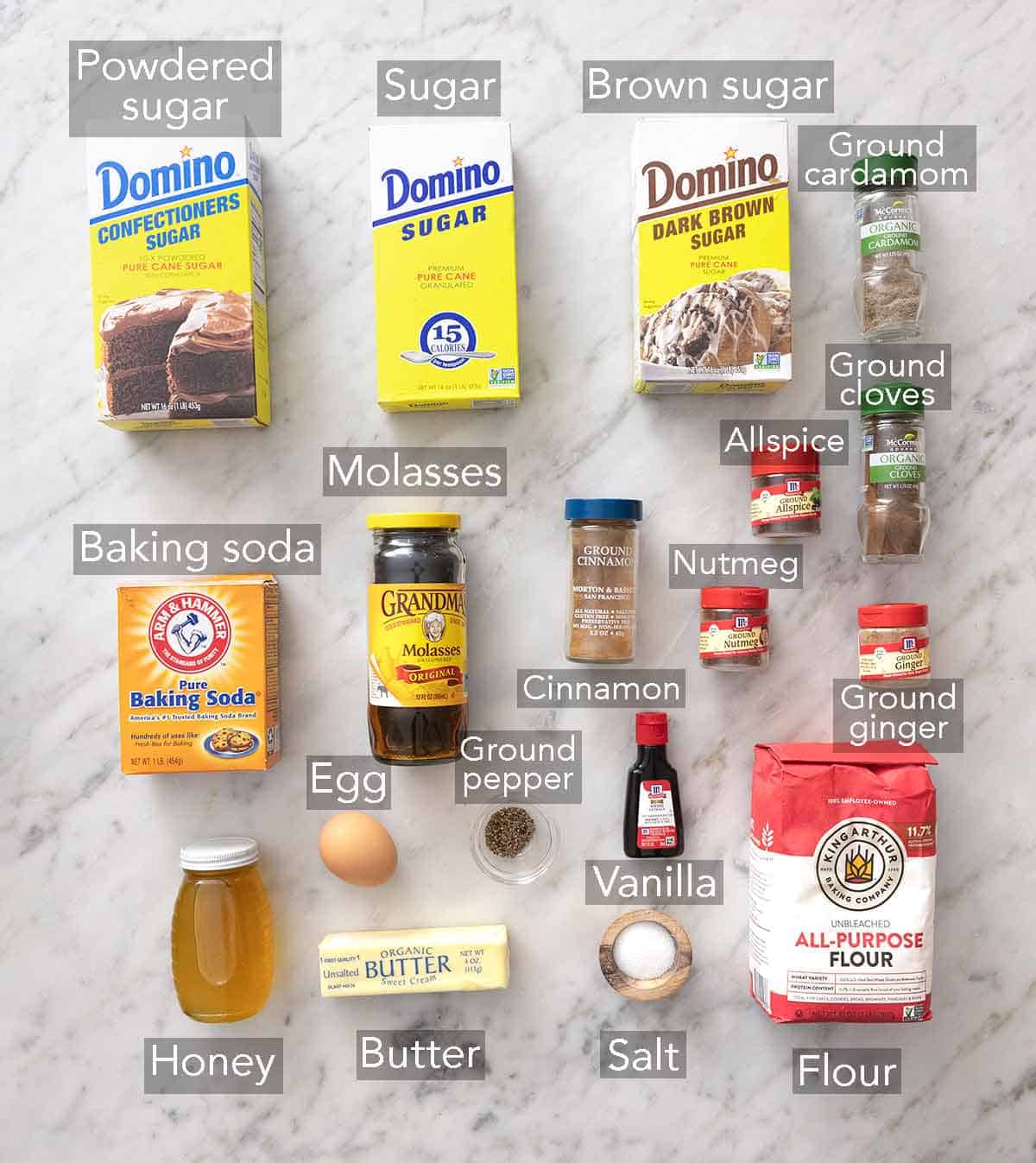
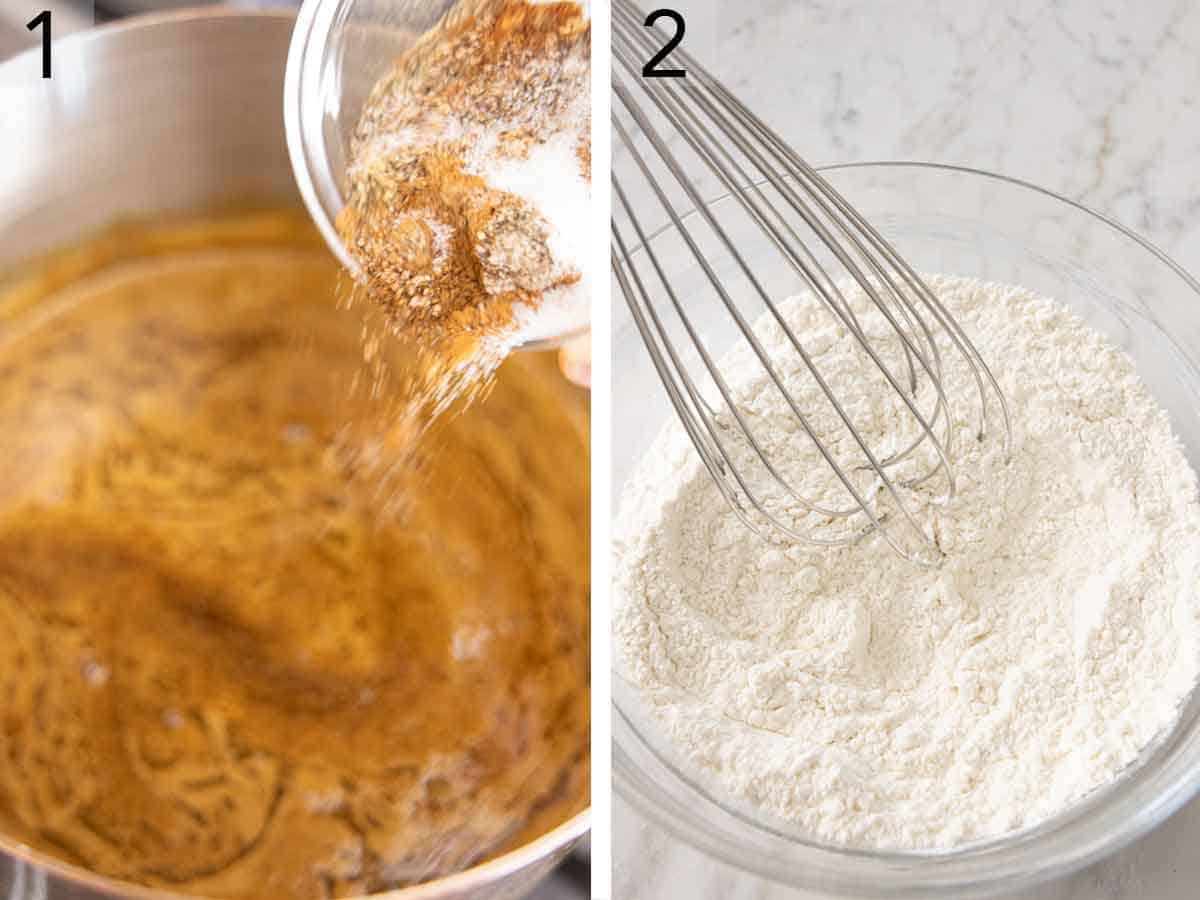

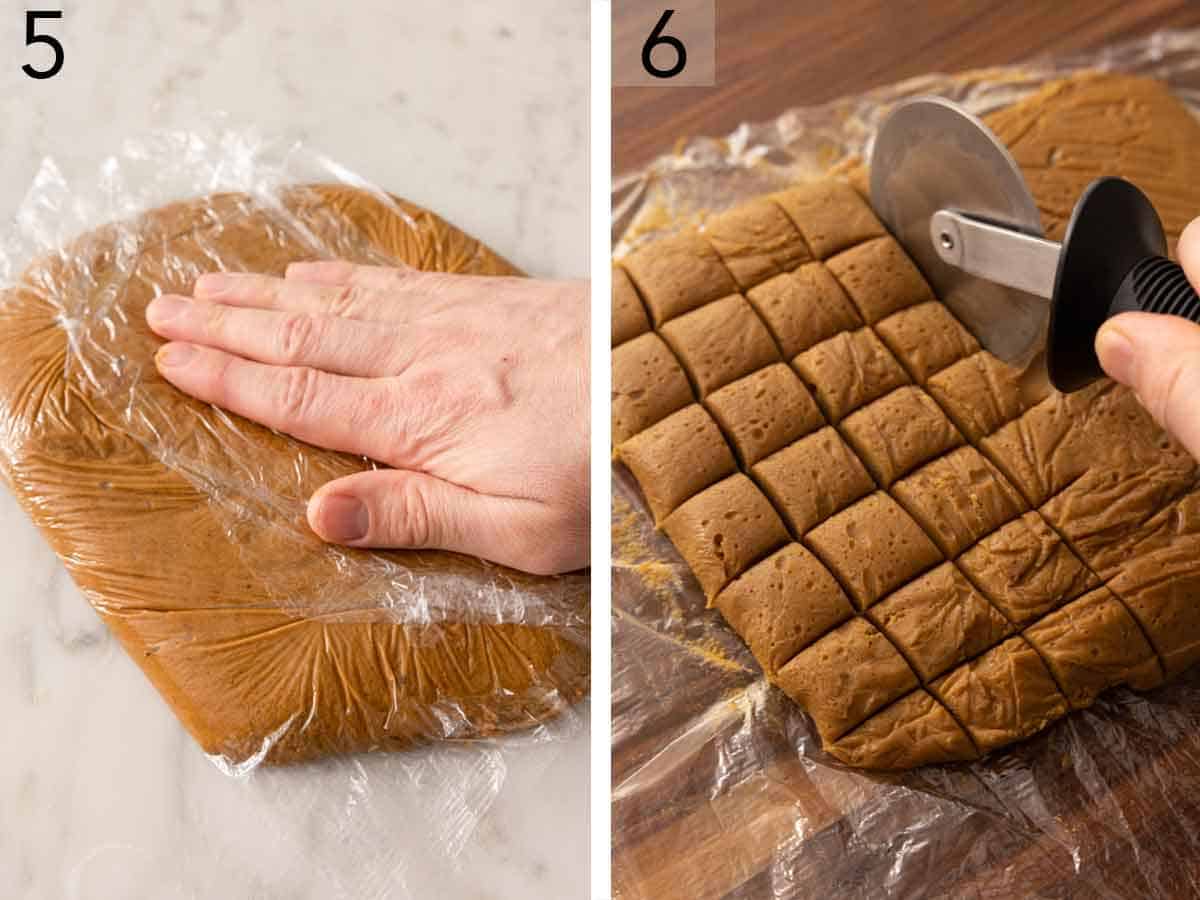
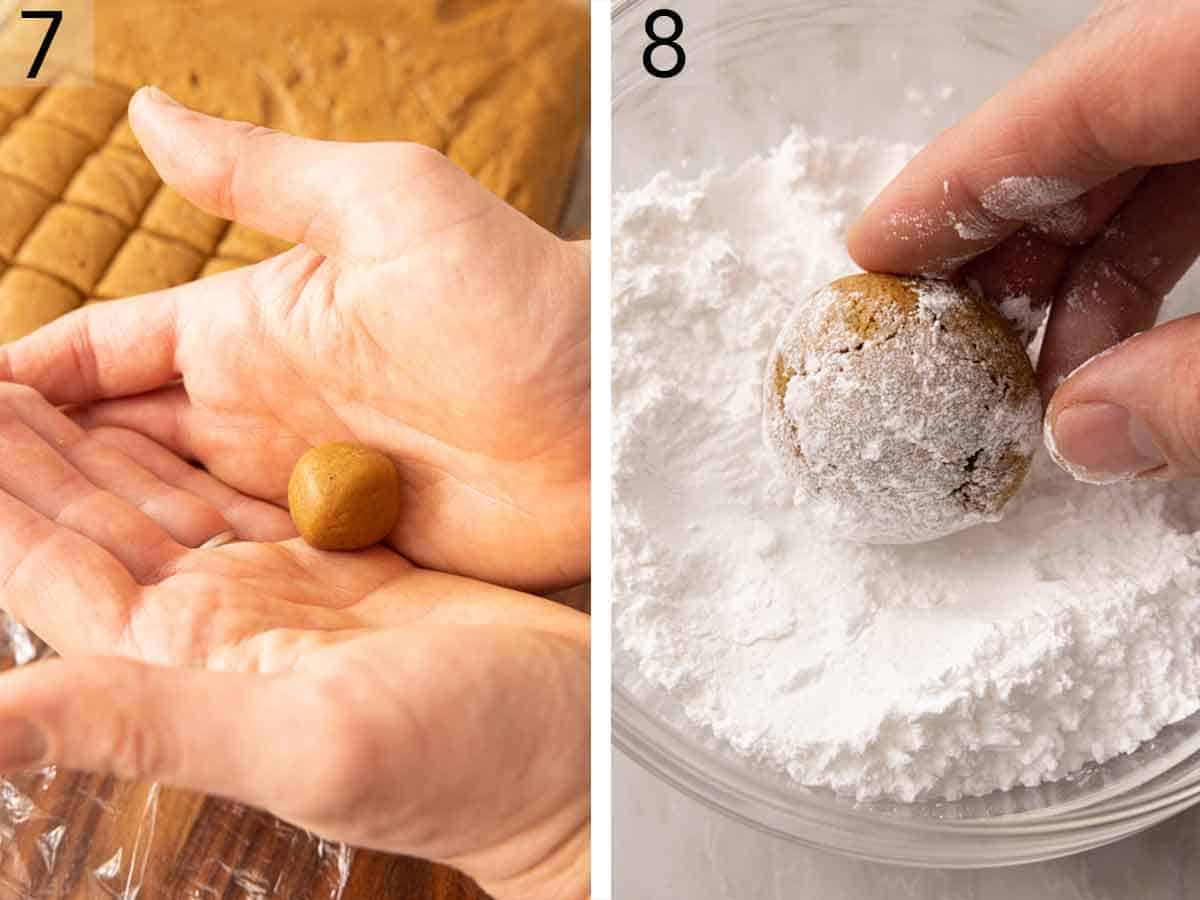
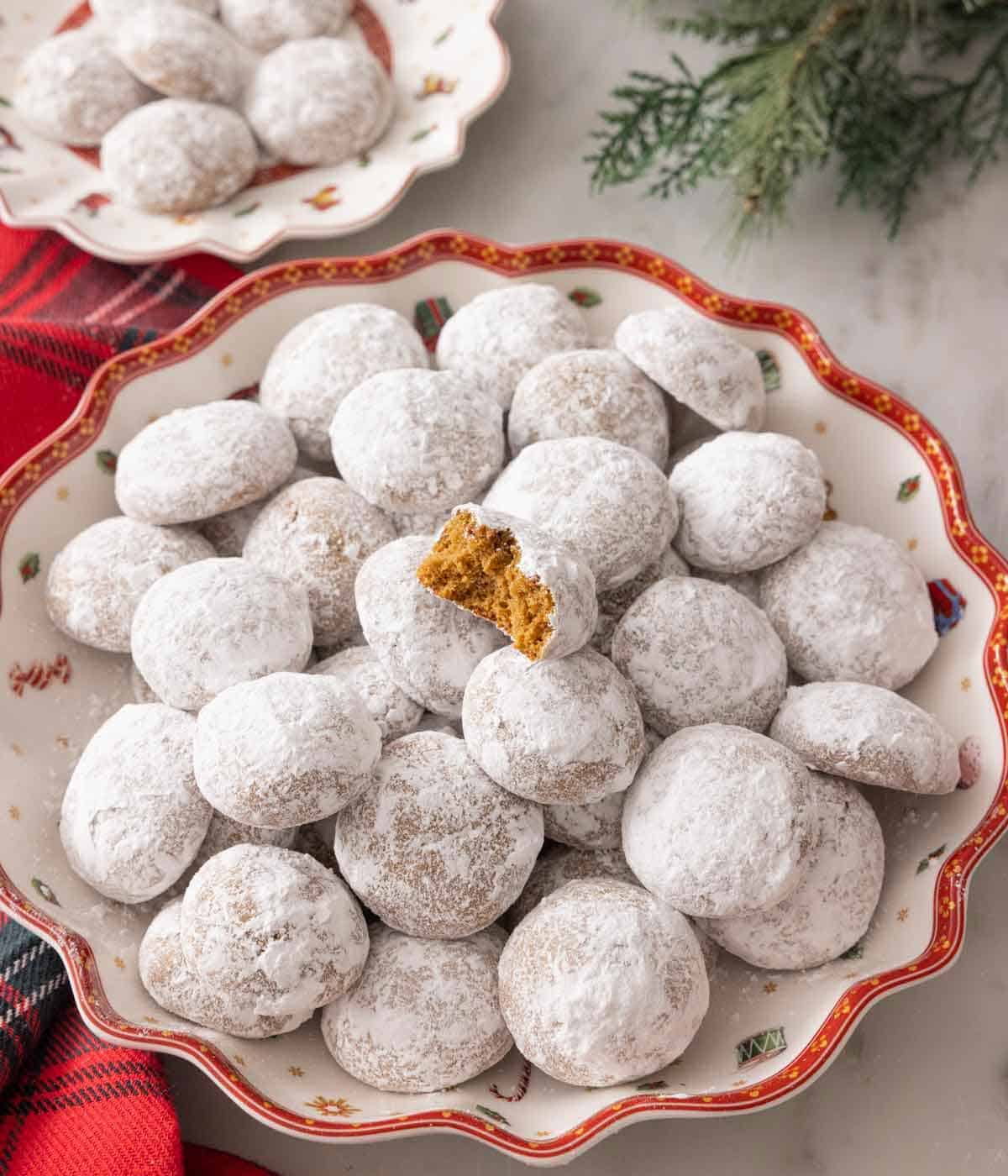
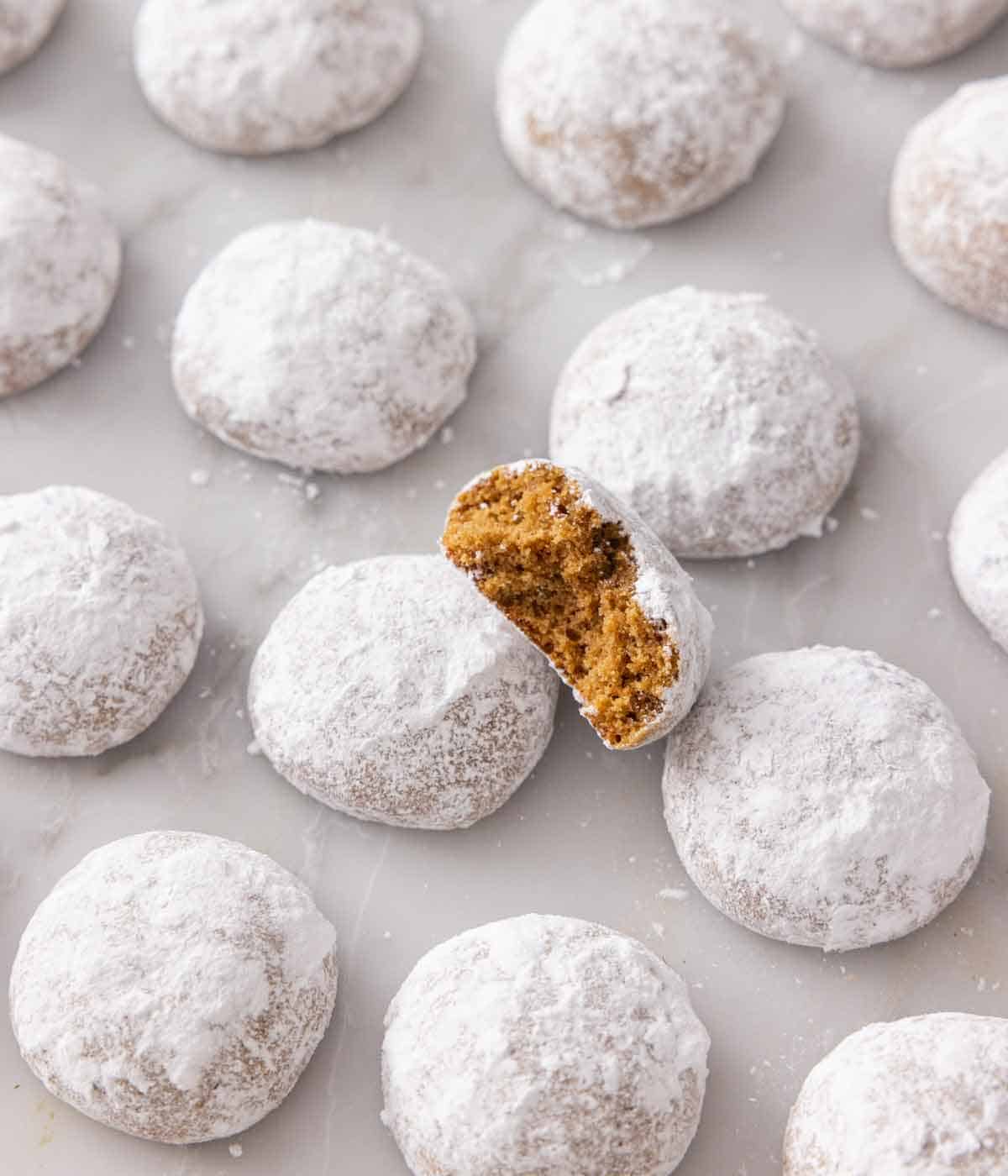
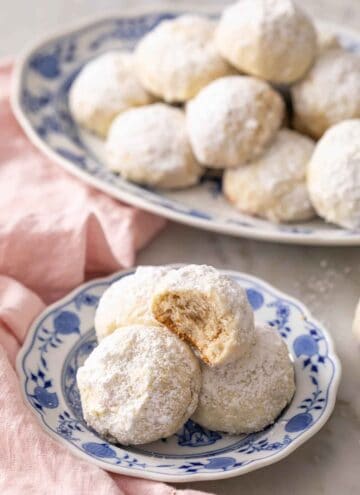

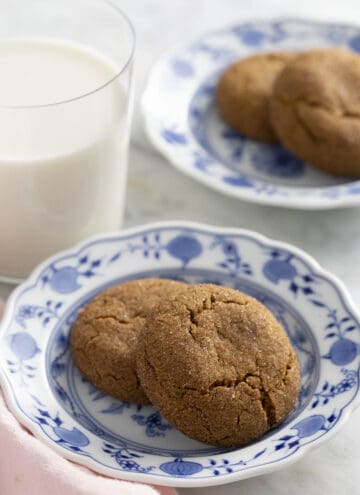
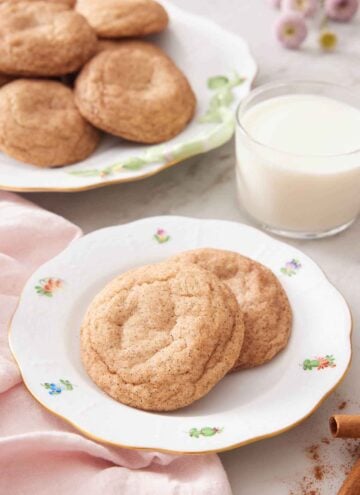
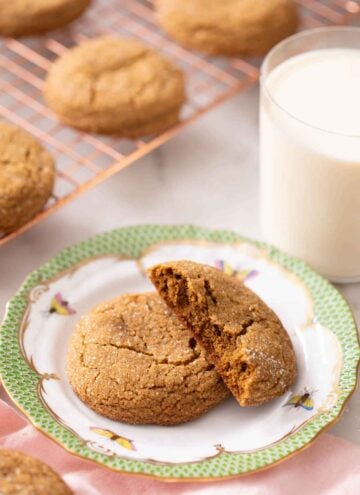

Leave a Reply